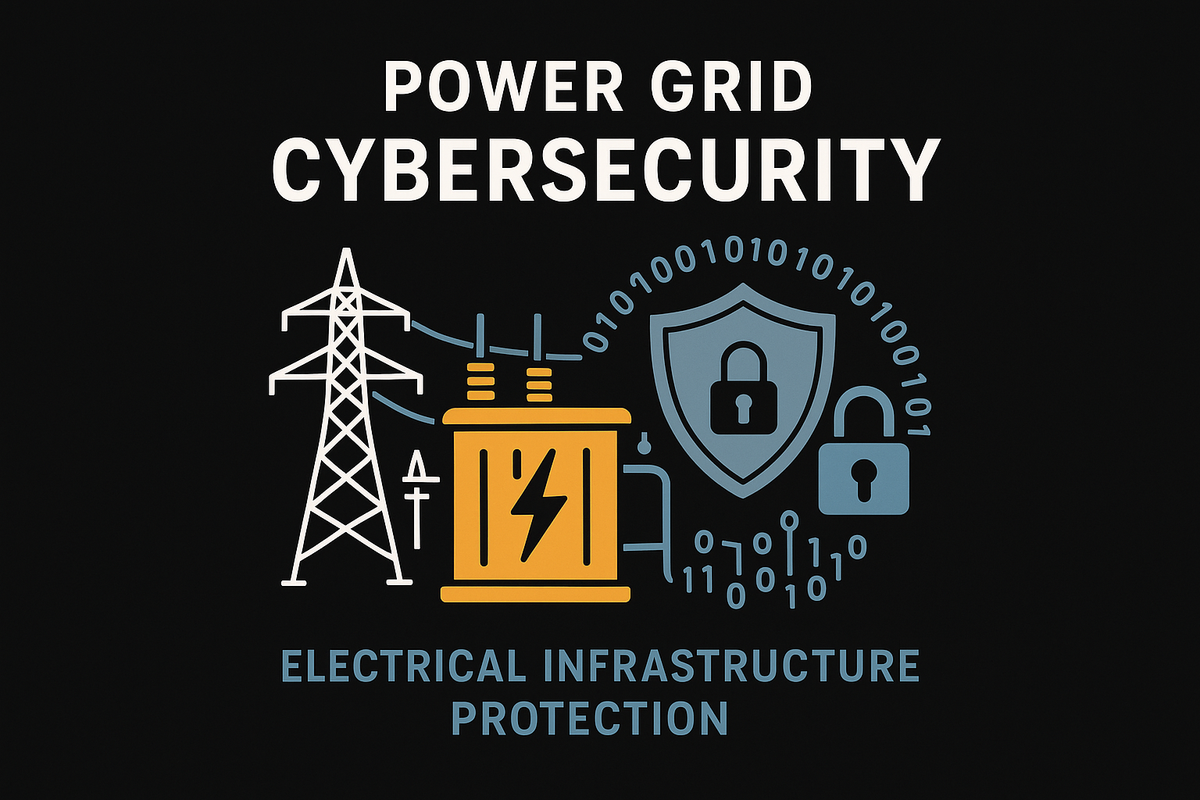Power Grid Cybersecurity: Electrical Infrastructure Protection

Introduction: Why Power Grid Cybersecurity Matters
Cybersecurity is now one of the top priorities for the power and utility sector, as attacks on critical infrastructure can result in wide-scale blackouts, economic chaos, and risks to national security. The convergence of IT and OT systems, digitization, regulatory demands, and growing interdependencies between grid and other sectors (like gas, telecom, and water) compound the risk. Recent global high-profile incidents have made it starkly clear: without strong, adaptive cyber defense, a keyboard stroke could take down a nation’s lights.
Threat Landscape: What Are the Risks?
- Sophisticated attackers, including advanced persistent threats (APTs), criminals, and hacktivists, target both legacy and modern grid systems using ransomware, malware, and persistent espionage campaigns.
- Real incidents in 2025 included multi-country blackouts and ransomware disruptions to major utilities, with attackers exploiting vulnerable industrial control systems (ICS) and supply chain dependencies.
- Emerging digitalization (AI, IoT sensors, and smart grid tech) means more entry points for adversaries. The introduction of inverter-based resources and distributed energy resources (DERs) increases system complexity and risk.
Critical Vulnerabilities in Electrical Infrastructure
- ICS/SCADA systems running outdated software, unpatched vulnerabilities, and default credentials remain common.
- Supply chain weaknesses (third-party software, hardware, and services) open indirect attack vectors.
- Newly interconnected assets (smart meters, IoT devices, cloud-based controls) frequently lack sufficient protective measures.
- Physical and cyber vulnerabilities are intertwined; incidents like cut fiber-optic cables or physical sabotage often facilitate broader cyber events.
- In India and other growing economies, legacy infrastructure and skill shortages further heighten exposure.
Regulatory and Policy Frameworks
- In the US, NERC and CISA set grid security standards; Europe focuses on ENISA advisories and national mandates.
- India is rolling out updated guidance under the Ministry of Power, focusing on real-time monitoring, mandatory audits, and AI-based detection for smart grids.
- Leading international standards (NIST NISTIR 7628, ISO/IEC 27019, IEC 62443) provide frameworks for grid protection.
Case Studies: Lessons from Recent Incidents
- The 2025 blackout across multiple countries was strongly suspected to be a coordinated cyberattack, evidencing gaps in both detection and resilience planning.
- Attacks in India during 2023–2025 involved large-scale malware intrusions, causing massive investigation and sector-wide upgrades.
- Municipal and regional utilities in the US and Europe faced successful ransomware and data breaches through compromised third parties, exposing customer and plant operational data.
Best Practices for Power Grid Cybersecurity
Network Segmentation and Zero Trust:
Strict separation of IT and OT environments, implementing microsegmentation and Zero Trust architectures, is shown to reduce attack spread.
AI-Powered Monitoring:
Deployment of SIEM with AI/ML capabilities enables realtime anomaly detection and rapid response, outperforming legacy signature-based defenses.
Vulnerability and Penetration Testing:
Frequent vulnerability scanning, red team exercises, and adversary simulation catch hidden weaknesses before adversaries exploit them.
Vendor Risk and Supply Chain Management:
Comprehensive risk assessments, contractually mandated cybersecurity standards, and continuous vendor monitoring are vital, as indirect attacks are increasing.
Incident Response and Recovery:
Regularly tested incident response plans, disaster recovery protocols, and robust backup strategies minimize downtime and enable swift restoration.
Human Factor and Skill Development:
Personnel training, ongoing security awareness, and the establishment of culture of cyber readiness complement technical controls; workforce shortages remain a top issue.
The Road Ahead: New Trends and Future-Proofing the Grid
- The move to renewable and distributed generation, electrification of transport, and new devices amplify attack surface and require constant updates to defenses.
- The global cybersecurity market for grid protection is booming, expected to nearly triple by 2034, reflecting rising investment in advanced defense systems and cyber-insurance.
- Collaboration between energy sector operators, regulators, and cross-domain partners (like gas and telecom) is crucial for holistic resilience.
Conclusion: A Call to Action
Protecting the electrical grid is not a one-time initiative but a continuous process. Regular audits, integrated controls, regulatory compliance, proactive threat hunting, and a skilled workforce are essential to keep the lights on in an age where digital and physical risks have become inseparable. Governments, utilities, and industry partners must collaborate across borders to share intelligence, enforce standards, and build resilient, future-ready grid systems.
Take the Next Step with CodeSecure Solutions
Cyber threats are growing more sophisticated every day. With a trusted partner by your side, you can safeguard your business while focusing on what truly matters—growth and innovation.
At CodeSecure Solutions, we deliver comprehensive cybersecurity services in Chennai, uniquely tailored for startups, SMEs, and enterprises:
- Vulnerability Assessment & Penetration Testing (VAPT)
- Network Security Solutions
- Compliance Support (ISO 27001, PCI-DSS, HIPAA, DPDP Act, GDPR)
- Cloud & Endpoint Protection
- Security Awareness Training
No matter your industry or size, CodeSecure customizes solutions to fit your needs—ensuring your data, reputation, and operations remain secure.
Ready to Strengthen Your Defenses?
- 📞 Call: +91 73584 63582
- ✉️ Email: [email protected]
- 🌐 Visit: www.codesecure.in
Stay secure. Stay informed. Choose CodeSecure Solutions—your partner in cyber resilience
